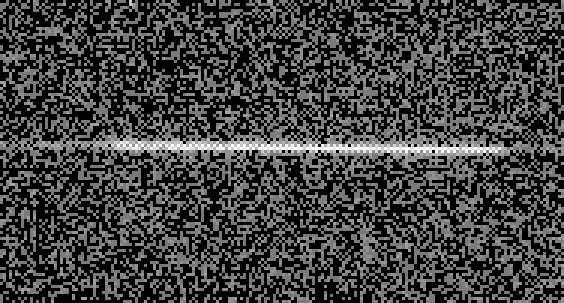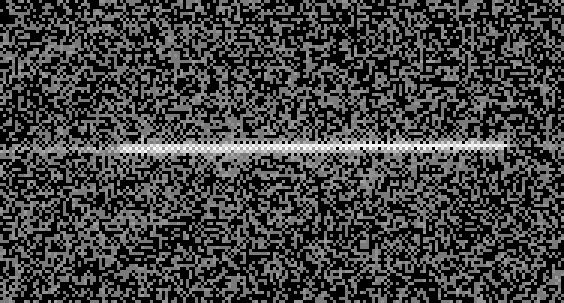Let’s review this sharpness testing project to date. My objective was a unified field test for sharpness, one that would conflate the effects of camera motion and vibration, lens focus errors, depth-of-field, field flatness, diffraction, and lens defects, and allow degradations from all these effects to be compared with a common yardstick. I succeeded in all but camera motion and vibration: strobe-lit images that would not show the effects of this tested unaccountably better than longer exposures lit with continuous lighting. I suspect changes in color of the lights as the problem, but I have no way to vary the brightness of my light source over a broad range while having the spectrum match that of strobe lighting.
So I had to come up with a way to measure camera motion and vibration independently. I chose to photograph an oscilloscope trace at a distance, so that the diameter of the focused phosphor dot was close to one pixel. As the front of the camera moved down the image of the dot on the sensor would move up, and as the front of the camera moved up, the image of the dot would move down. Having the dot move from left to right during the exposure would allow me to see during what portion of the shutter’s open period the vibrations occurred, and to see how long it took them to damp out.
That technique worked pretty well once I turned the oscilloscope intensity way down to make the spot small and started looking at the raw composite images to avoid interpolation artifacts. It allowed me to conclude, for the Nikon 800E with the Zeiss 100mm f/2 ZF lens attached, and a RRS TVC-34L Versa Series 3 tripod with RRS BH-55 ball head, that a 3 second delay after the mirror went up was sufficient to eliminate camera vibration as a problem, if a problem is defined as greater than a one pixel effect.
So today, I turn to my new tool to answer an age-old photographic question: “Is raising the center column on your tripod a bad thing?” I can’t answer the question in general, but I can say that, for this particular tripod (with a really hefty center column), with all but the smallest legs sections extended, indoors on a vinyl-tile-over-concrete floor, with a D800E and the Zeiss 100 camera with a remote release and a three-second delay between mirror raising and shutter opening, raising the column, even all the way to the top, isn’t injurious to the images.
Column all the way down:
Column half way up:
Column all the way up:
All of the above are composite raw images, with no demosaicing. All are half-second exposures. The reason why there’s a ghost to the left of the beginning of the trace is that the phosphors in the oscilloscope take awhile to decay, and when the shutter first opens, it photographs the light emanating from phosphors that were lit by the ‘scope earlier. This doesn’t happen to the right of the trace.



Leave a Reply